An Unexpected Find
Dr. Marcus Greene had encountered just about everything during his career as a veterinarian—fractured limbs, unusual tumors, and the emotional weight of final farewells. He understood that the job came with its share of tough moments and complicated choices. Still, nothing could have prepared him for the day a pregnant chocolate lab named Lola walked into his clinic.


At first glance, she appeared like any other expectant dog, cheerfully wagging her tail as she waddled inside. The delivery began routinely, just like many others he had managed. But midway through, something changed—something so bizarre and unexpected that it stopped him in his tracks. From that point on, the situation spiraled into something no one could’ve anticipated.
A Dog Named Lola
Mrs. Thompson stepped into Dr. Greene’s clinic, gently holding her chocolate lab, Lola, in her arms. Her face showed a mix of concern and cautious optimism. Lola was expecting her first litter. The dog remained relaxed, her tail softly wagging, oblivious to the anxiety her owner was feeling. Dr. Greene greeted them with a warm smile and some comforting words—everything appeared normal, and there was no reason to worry.


Mrs. Thompson gave a quiet nod, trying to steady her nerves. Lola wasn’t just a pet—she was part of the family. Like most chocolate Labradors, she had a kind heart and a sweet, gentle nature. But what neither Mrs. Thompson nor Dr. Greene realized at that moment was that this pregnancy was far from typical.
Searching For A Safe Haven
To the Thompsons, Lola was more than a pet—she was family. So when her due date approached, Mrs. Thompson wasn’t willing to take any risks. She brought Lola to Dr. Greene’s clinic, hoping for a safe delivery and some reassurance. The clinic buzzed with barking dogs and the steady hum of equipment, but Dr. Greene navigated it all with steady, reassuring ease.


Dr. Greene’s years of experience were evident in the way he handled everything. While many dogs give birth without issue at home, Lola’s status as a first-time mother made the clinic the wiser option. It seemed like a simple precaution—but with what was about to unfold, that choice would prove more important than anyone could have imagined.
More Than Anyone Bargained For
When Dr. Greene examined Lola that day, he had to look twice. Her belly had expanded far beyond what he’d anticipated since her previous visit. After reviewing the X-rays from that morning, he gave a subtle nod to himself. It was clear this was going to be a demanding day.


Facing Mrs. Thompson, Dr. Greene calmly informed her that Lola was probably expecting a sizable litter. Her eyes widened in surprise—she hadn’t anticipated that, but she trusted his judgment. The team quickly prepared the room and took their positions. From there, it was a waiting game, relying on time, patience, and Lola’s natural instincts to take over.
A Birth Unlike Any Other
For almost two months, Mrs. Thompson had eagerly awaited the day—sixty-three days, the typical length of a dog’s pregnancy. She’d been preparing alongside Lola, gathering supplies, fretting over every detail, and picturing tiny paws running across her home. So, when the moment finally arrived, the clinic was filled with a low hum of anticipation. Everyone was prepared.


With calm and steady hands, Dr. Greene guided the delivery. Even the nurses nearby felt their pulses quicken more than usual. While puppy births could be chaotic and uncertain, the sense of anticipation never changed. Despite the tension, they remained composed professionals, and so far, everything was unfolding as expected.
Lola Needed Their Support Right Away
Dr. Greene recalled Lola’s last visit—a lively, tail-wagging bundle of energy that brightened the exam room. True to most Labs, she was spirited and eager for affection. Yet, when Mrs. Thompson arrived this time, the difference was clear. Lola was uneasy, pacing nervously, whining, and breathing heavily.
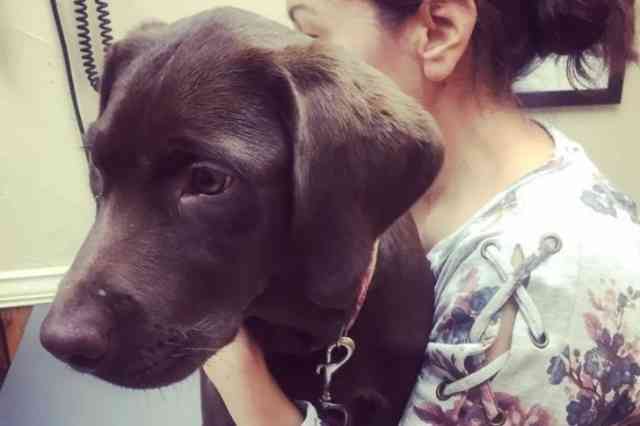
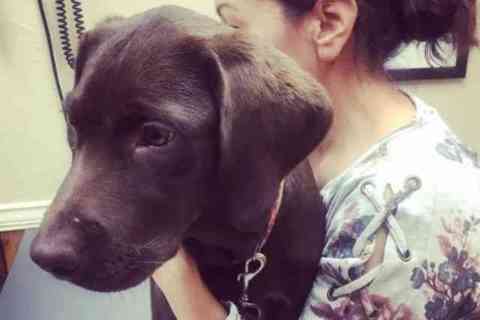
Lola’s eyes flickered nervously around the room, far from her usual cheerful demeanor. Dr. Greene didn’t have to guess—he’d witnessed this behavior before. Labor had begun, and it was progressing quickly. He offered Mrs. Thompson a steady nod and summoned his team. No matter what lay ahead, Lola needed their full support now more than ever.
Staying Calm Was Essential
Mrs. Thompson struggled to stay composed. Watching Lola struggle made her heart pound, and it was evident. Yet, Dr. Greene softly reminded her that dogs sense their owner’s emotions—and at that moment, Lola needed calmness. Taking a deep breath, she nodded and placed a gentle, steady hand on Lola’s back. Slowly, the tension eased for both of them.

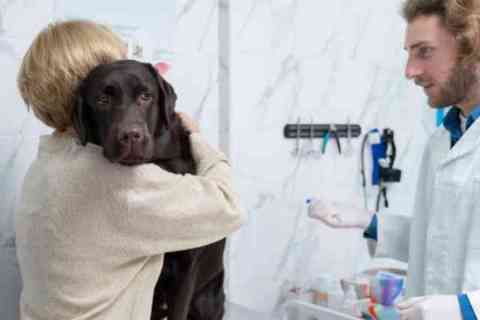
Though brief, the moment held great significance. Dr. Greene gave the nod, and the team gently guided Lola to the delivery space. The arrival of the puppies was imminent, and the anticipation was palpable. The room fell silent, all eyes focused, awaiting the first sign of new life.
How Many Puppies Would She Bear?
Typically, dog litters range from five to six puppies, but it’s not uncommon to have as few as one or as many as twelve. Mrs. Thompson stayed close, anxiously keeping track of each tiny puppy as it was born, silently wishing for a healthy group. Lola remained steady and determined, doing her best throughout.


While dogs often manage labor independently, Dr. Greene remained nearby, gloved and prepared to assist if needed. The atmosphere was charged with a mix of tension and hope. Every new puppy delivered sparked feelings of relief and amazement. All eyes were fixed, eager to discover just how many little ones Lola would bring forth.
A Dozen Little Miracles
Labor in dogs tends to be much faster than in humans, typically lasting anywhere from 3 to 12 hours. Yet, when Lola’s labor began, nobody could predict how long it would last or how many puppies she’d have. Mrs. Thompson stayed nearby, grateful for the company. Surrounded by the full veterinary team, Lola had more support than most dogs ever receive.
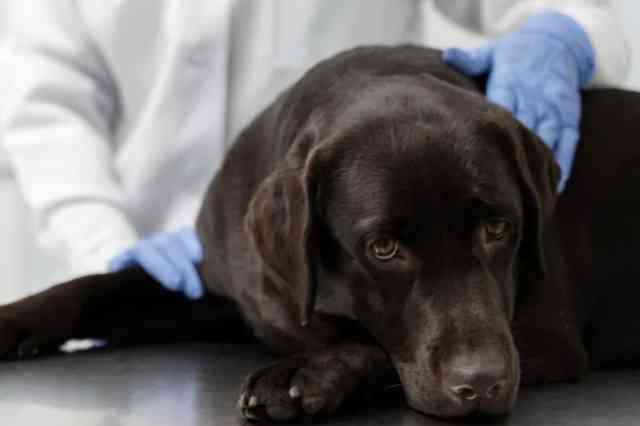
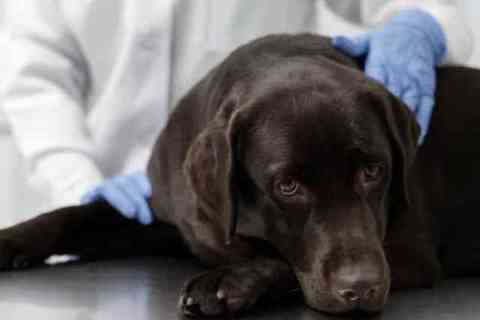
The puppies came one after another—four, then six, then eight. Silence settled over the room as the numbers kept rising. When it finally ended, a dozen healthy puppies had been born. It was an uncommon and draining delivery, but above all, it was a moment no one would ever forget.
One Puppy Didn’t Move
Lola’s litter was as varied as it was large—three black, four chocolate, three yellow, and a single silver puppy nestled among them. That silver pup immediately caught everyone’s eye. Silver Labradors are uncommon, and this tiny one gleamed under the clinic lights. The team also noted the perfect balance—six females and six males.


It seemed like a little miracle unfolding. Then, the mood changed. While the puppies squirmed and cried, one remained silent. Its tiny paws didn’t twitch, and it made no noise. The room grew tense. Dr. Greene moved closer, his gaze fixed on the motionless pup. Something wasn’t right.
Hold On to This One
One small pup lay utterly motionless. No paw movements, no gentle whimpers—nothing at all. Dr. Greene’s expression grew serious. The team sprang into action, every second feeling painfully slow. Though never spoken aloud, the word “stillborn” hung heavily in the room. Mrs. Thompson clasped her hand over her mouth, her eyes filled with fear. The happiness of the new arrivals shifted suddenly into sorrow.
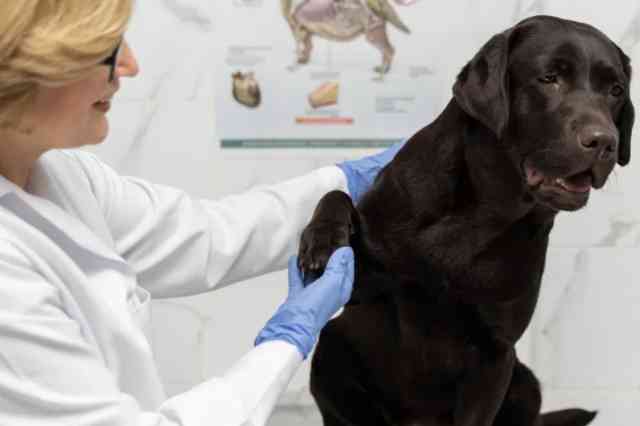
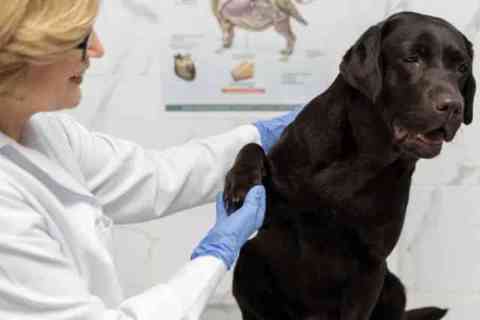
Yet, Dr. Greene refused to surrender. He carefully held the tiny pup, massaging its chest and warming it, silently urging it to keep fighting. The entire room seemed to pause, holding its breath. Everyone prayed for a flicker of life—a sign that hope wasn’t lost. In a moment meant for joy, no one was prepared to say goodbye to even one.
Lola Knew Something Was Wrong
After delivering eleven lively, healthy puppies, Lola was exhausted but far from finished. While Dr. Greene focused on reviving the motionless pup, Lola gradually rose. It was unexpected—she should have been resting—but somehow, she sensed something was wrong. Approaching the group gathered around, she softly nudged the tiny pup with her nose.
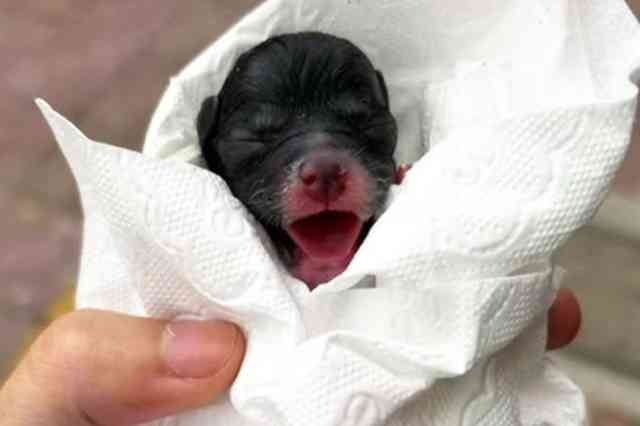

It wasn’t desperate—just a gentle, confident nudge. Like a mother reassuring her child, “I’m here. Come back to me.” The room quieted completely. Despite all the vet’s equipment and expertise, sometimes it’s a mother’s instinct that holds the greatest power.
The Strength of One Gentle Touch
Just as hope seemed to be fading, the tiny pup drew its faintest breath—then another followed. Lola gently licked her little one, as if she’d always believed it would survive. Everyone watched in silent amazement. That small flicker of life had come back—and it appeared Lola’s touch had played a crucial role. She settled back down, curling protectively around her now whole litter.


A wave of relief swept through the room, yet Dr. Greene sensed the story wasn’t finished. It wasn’t just a stroke of luck that saved the pup. With twelve puppies and one close call, there was something unusual about this litter—and the surprises were far from over.
Something Was Off
Twelve puppies was already a large litter, but what truly stood out was the variety of colors. Labradors typically appear in black, yellow, or chocolate. Black is the most common and original shade, while chocolate was once uncommon. Yellow has also been around for some time. Yet, Lola’s litter included every one of these colors—black, chocolate, yellow—and even a silver pup, which didn’t match the typical Labrador color pattern.
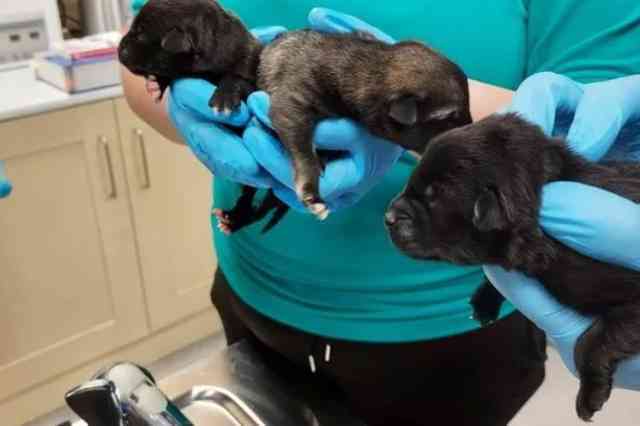
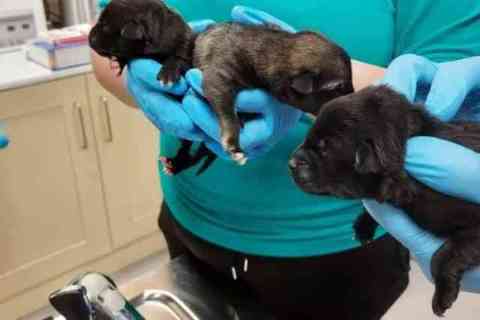
A litter with such a wide range of colors was not just rare—it was puzzling. Dr. Greene looked from Lola to the puppies again. The mix of colors didn’t align with what he had anticipated. Something unusual was happening, and it went beyond simple genetics.
Why Didn’t They Look Alike?
During their initial checkup, everything appeared flawless. Lola was in good health, her dozen puppies were thriving, and the clinic was pleased with their development. However, a phone call soon shifted the atmosphere. Mrs. Thompson noted something unusual—six of the puppies had opened their eyes, but the rest hadn’t. That discrepancy didn’t add up.
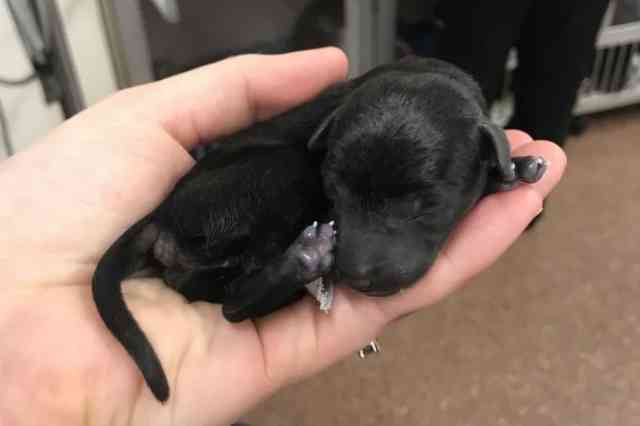
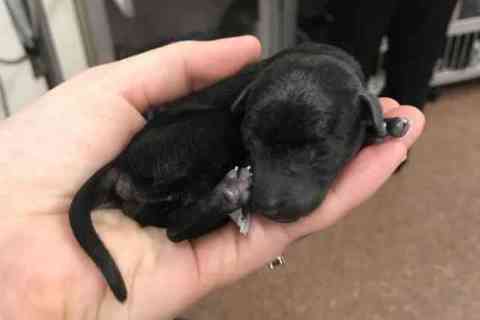
Puppies typically open their eyes within a similar timeframe. Dr. Greene paused, intrigued. Though he’d encountered many cases, this one seemed unusual. Eager to investigate further, he suggested visiting Mrs. Thompson’s home. Something was off, and if there was more to uncover, he wanted to witness it firsthand.
The Miracle’s Eyes Revealed More
During his visit, Dr. Greene carefully lifted each puppy, beginning with those who had already opened their eyes. He picked up Miracle first—the tiny pup with a white patch on her chest. But it wasn’t the marking that caught his attention; it was her eyes. One was a typical deep brown, while the other was an intense, striking blue.


Heterochromia, or having two different colored eyes, is very uncommon in dogs—especially Labradors. It results from a unique genetic variation rarely found in this breed. Dr. Greene examined Miracle more carefully. The little pup blinked slowly and peacefully in his hands, her unique eyes raising more questions than they answered.
There Was One More Like Her
The deeper Dr. Greene observed Miracle, the stronger his curiosity became. There was something unusual about this litter. He asked Mrs. Thompson quietly if any other puppies shared Miracle’s eye trait. She nodded. “Destiny does,” she replied. And that wasn’t the only surprise.


Much like her sister, Destiny had striking blue and brown eyes, a white patch on her chest, and even a curled tail—a characteristic unusual for Labradors. Dr. Greene’s forehead creased in thought. Two puppies with such rare traits in the same litter? It couldn’t be mere chance. Whatever was happening was unlike anything he’d encountered before.
Distinctive and One-of-a-Kind from Birth
Labradors are natural swimmers—it's in their nature. Originally bred to assist fishermen, most Labs still love the water today. Their dense coats provide warmth, and their sturdy, straight tails function like rudders, guiding them smoothly through the water. So when Dr. Greene observed Miracle and Destiny, something about them felt unusual.


Unlike typical Labradors, their tails curled instead of staying straight, resembling those of a completely different breed. Though a subtle trait, combined with their unique eyes and markings, it sparked even greater curiosity. These two puppies weren’t merely different—they seemed to belong to a world beyond the ordinary.
He Needed to Find Out Why
Dr. Greene couldn’t let go of the sense that something about Lola’s litter was off. Miracle and Destiny stood out too much—their eyes, tails, and markings were unlike typical Labradors. So he carefully brought up the idea of DNA testing. Mrs. Thompson looked worried. “Do you think something’s wrong?” she asked. He shook his head gently. “Not wrong,” he replied. “Just... different.”
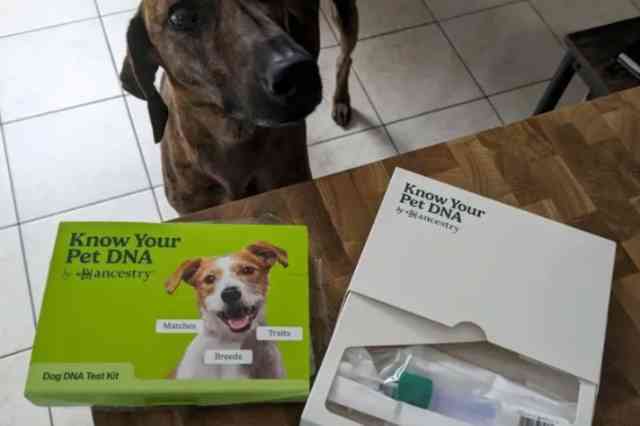

It wasn’t driven by fear—it was curiosity. The veterinarian in him needed to understand. These weren’t just odd traits; they were clues. Something in their DNA was trying to tell a story, and he was determined to uncover it. Whatever secrets their genes held, he was ready to discover what made them truly unique.
Waiting for the Truth
Mrs. Thompson noticed the genuine curiosity in Dr. Greene’s eyes and agreed without a second thought. If there was more to uncover about Destiny and Miracle, she wanted to understand it as well. Dr. Greene carefully collected cheek swabs from both pups, making sure they were comfortable and calm. The samples were sent to the lab, and then came the hardest part of all—waiting for answers.
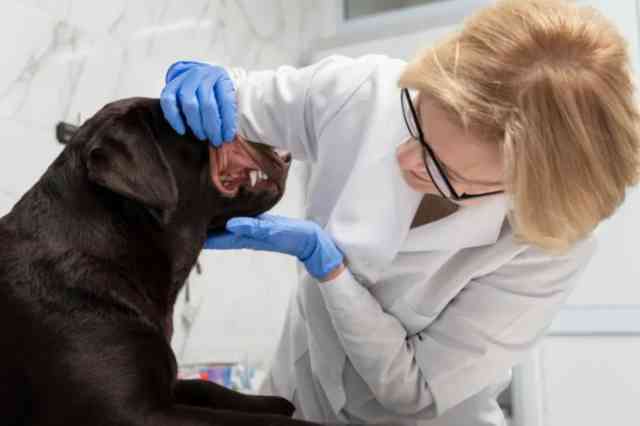
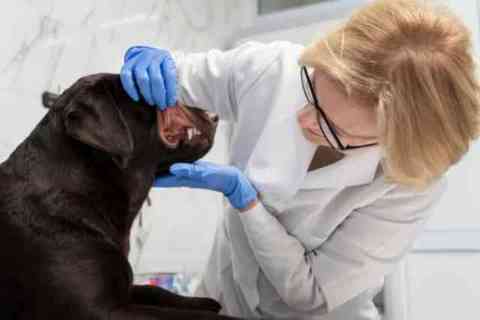
Dr. Greene did his best to concentrate on his other patients, but his thoughts kept returning to Lola’s litter. There was something about those two puppies that lingered in his mind. Mrs. Thompson felt it as well. A quiet mystery lay nestled in a dog bed in her living room, and she, too, was eager to uncover the truth.
The Results Turned Everything Upside Down
Dr. Greene was in the middle of a standard checkup when his assistant stepped in, holding an envelope. The DNA results had finally come in. His heart skipped a beat. As soon as he wrapped up with the patient, he quietly stepped aside, opened the envelope, and quickly read through the report. At first glance, the results didn’t quite add up.


Miracle and Destiny weren’t simply unique—they were genetically distinct from the rest of the litter in a way Dr. Greene hadn’t anticipated. These two weren’t just members of a big family; they stood apart entirely. He stared at the report, trying to wrap his head around what the results were actually revealing.
A Genetic Mystery Uncovered
The results revealed that Miracle and Destiny were monozygotic twins—identical twins. In humans, that’s already considered rare, but in dogs, it’s nearly unheard of. Most litters consist of fraternal siblings, each born from a different egg, like typical brothers and sisters. But Miracle and Destiny had come from a single fertilized egg that had split in two.


The exact reason why this occurs remains a mystery, even to scientists. It’s one of nature’s unsolved wonders. Dr. Greene leaned back, amazed. He had sensed these pups were extraordinary, but now he had undeniable evidence. Lola hadn’t simply delivered a large litter—she had made history.
What Set Them Apart
Most puppies are like fraternal twins—born together but from separate eggs, similar to human siblings who share a birthday. That’s quite common. But identical twins in dogs? That’s a different matter entirely. It’s so uncommon that the first documented case wasn’t reported until 2016.


Prior to that, there was no solid evidence that identical twins could occur in dogs. There might have been others before, but they went undetected. That’s what made Miracle and Destiny truly extraordinary. They weren’t merely a rare coincidence—they were a phenomenon that almost never takes place. Lola’s litter wasn’t just big; it was a historic milestone.
They Truly Were Miracles
Discovering that Miracle and Destiny were identical twins left Dr. Greene amazed. In his entire veterinary career, he had never encountered anything like it. He couldn’t quite explain how it happened, and the more he pondered, the more unsettled he became. Determined to understand, he reached out to fellow vets, scoured articles, and asked questions that had no simple answers.


When Dr. Greene finally shared his findings with Mrs. Thompson, she was equally astonished. The term “miracle” took on a whole new meaning. They both realized this was far more significant than they had initially imagined—and the story was far from finished.
The Beginning Of The Mystery
Most pet owners prefer vet visits to be rare, as frequent trips often signal a problem. So when Mrs. Thompson kept returning to Dr. Greene’s clinic repeatedly after Lola’s delivery, it raised some eyebrows. The unusual thing was that none of it was due to illness. Lola was healthy, and the puppies were flourishing.


However, something out of the ordinary had occurred—something that kept bringing them back to the clinic. Dr. Greene couldn’t get it out of his mind, and neither could anyone else who witnessed what emerged from that delivery room. The issue wasn’t with Lola herself, but with her newborn puppies.
There Were Additional Surprises
During a conversation with Mrs. Thompson about her visit that afternoon, Dr. Greene caught something that made him stop and think. Miracle and Destiny were developing much faster than their siblings—not just by a small margin, but noticeably so. This grabbed his focus. He had assumed the mystery was resolved and that everything would calm down. But Lola’s puppies still had more surprises in store for him.


His curiosity reignited, he went back to Mrs. Thompson’s home with a notebook to examine each puppy more carefully. There was definitely something unusual happening—something beyond his current understanding. If Lola’s litter had shown him anything, it was to always be ready for the unexpected.
Why Weren’t They Growing?
Dr. Greene gathered his scale, tape measure, and notepad, carefully recording the weight and length of each of Lola’s puppies. Something seemed unusual. While Miracle and Destiny were flourishing, the others weren’t keeping up as well. Though puppies don’t all grow at the same rate, this disparity was too significant to overlook. Was it diet? Genetics? Or something else altogether?


Though the experienced vet had encountered slow-growing puppies before, this case felt different. Committed to uncovering the cause, he reached out to fellow veterinarians and animal specialists. There had to be an explanation—he just needed to dig a bit deeper to uncover it.
Seeking The Missing Piece
Dr. Greene couldn’t ignore the sense that something unusual was happening with Lola’s litter. He brought together a team of veterinarians and animal specialists to review all the peculiar details and lingering questions. Together, they brainstormed theories, examined studies, and worked to connect the dots.


Yet, nothing could account for the significant growth difference between Miracle and Destiny and the other puppies. Ultimately, the group agreed—they needed clearer answers.
This time, they decided to run DNA tests on all 12 puppies. Whatever secrets lay hidden in their genes, it was time to reveal them.
Returning to Uncover More Answers
Armed with cotton swabs and plenty of questions, Dr. Greene went back to Mrs. Thompson’s house. Methodically, he swabbed the cheeks of each puppy. To him, those 12 squirming little faces represented 12 unique puzzles. DNA testing in dogs doesn’t involve blood or anything invasive; a simple buccal swab—a gentle brush along the inside of the cheek—was all that was needed.
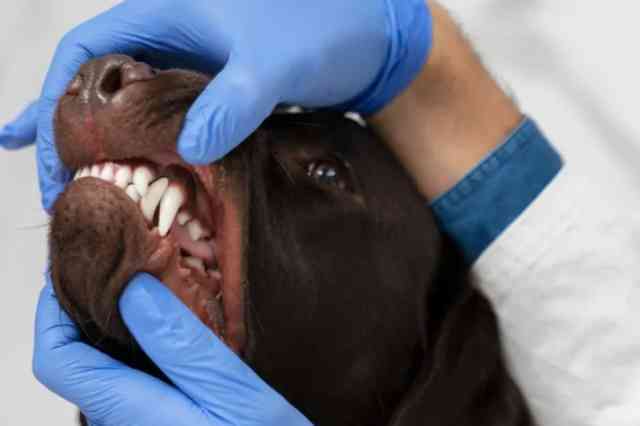
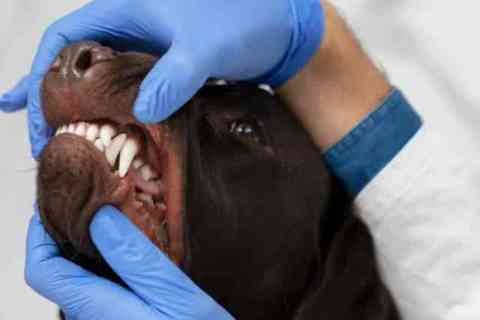
The samples were sent off to the lab once more, this time covering the entire litter. Dr. Greene hoped that seeing the complete picture would bring clarity. Whatever was happening with these puppies, he was determined to get to the bottom of it.
One Mother, Two Litters
Once more, Dr. Greene found himself anxiously waiting—checking the mail, watching the clock, and wondering what the lab would reveal this time. Then, on a typical afternoon, his assistant handed him an envelope. He opened it cautiously, not expecting anything extraordinary. But what he read brought him to a sudden halt. The mystery was finally unraveled: Lola’s puppies were the result of a phenomenon called superfecundation.


Though it sounded dramatic, the explanation was straightforward—Lola was carrying two litters simultaneously, each sired by a different male. This rare occurrence explained all the oddities. Suddenly, every unusual detail fell into place.
Two Fathers, One Astonishing Discovery
Superfecundation isn’t just a fancy term—it’s an actual phenomenon. Though most common in dogs, it remains rare. It occurs when a female mates with multiple males during her fertile period, producing puppies with different fathers within the same litter. When Dr. Greene shared this with Mrs. Thompson, she was stunned. Two dads? Two litters at the same time?


Though it seemed unbelievable, this revelation finally clarified everything—why Miracle and Destiny appeared so different from their littermates, why they developed more quickly, and why so many pieces didn’t fit before. Yet, the mystery wasn’t entirely over; it held a surprise no one expected.
Lola’s Unforgettable Night
Now that the DNA results clarified the mystery, Dr. Greene couldn’t resist asking Mrs. Thompson if she had any clue how Lola came to have two litters from different fathers. She sighed and smiled sheepishly. It turned out that during one of Lola’s heat cycles, she had a bit of an unexpected escapade.


Mrs. Thompson had believed Lola encountered only one male that evening, but clearly, Lola had been more active than anticipated. Everything made sense now. That single night out had resulted in an extraordinary litter—or rather, two. Miracle and Destiny stood as living, breathing evidence of Lola’s adventurous night.
Twelve Tiny Clues Revealed
The reality was beyond what anyone had imagined. Lola wasn’t just carrying a single litter—she was carrying two simultaneously, which explained everything: from the rare identical twins, Miracle and Destiny, to the unusually large number of puppies. Even the full spectrum of Labrador colors—black, chocolate, yellow, and silver—came together in one unique, mismatched bundle of fur.


Although Labradors can have litters with mixed colors, having this many shades in a single group is nearly unprecedented. Lola’s adventurous night had resulted in something truly one-of-a-kind. These puppies weren’t just adorable—they stood as living evidence that nature often has surprises even veterinarians can’t foresee.
Lola Loved Every Single One
Dr. Greene and Mrs. Thompson finally got their answers: two litters, two fathers, and a pair of identical twins explained weeks of puzzlement. In all his experience, Dr. Greene had never encountered anything like this. Lola wasn’t just a devoted mom—she was a record-breaker.


While the humans were fascinated by the science behind it, Lola couldn’t have cared less about genetics or rare occurrences. To her, there were simply 12 lively, hungry, and lovable puppies—and that was all that mattered. She nurtured them, kept them clean, and curled protectively around them like any devoted mother. To Lola, they weren’t unusual—they were hers, and that made them perfect.
Every Dog Warrants an Opportunity
Lola’s tale concluded happily—12 healthy puppies, a caring family, and a mystery that amazed even an experienced vet. Yet, not every dog is so fortunate. If you’re thinking about adding a pup to your life, one of the best things you can do is ensure they’re spayed or neutered.


It’s not just about avoiding unexpected litters—it’s about giving your dog a longer, healthier life. Spaying or neutering also plays a key role in reducing the number of homeless dogs. Whether it’s a rare pup like Miracle and Destiny or a shelter dog hoping for a family, every dog deserves a safe home, a full belly, and someone to love them.